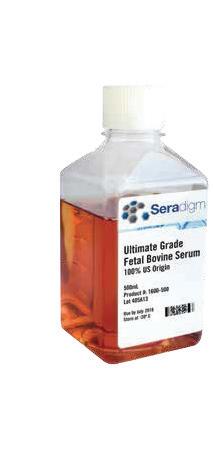
13 minute read
R&D News
The federal government through Western Economic Diversifi cation is investing just less than $3 million towards new state-of-the-art metabolomics assessment equipment that will enable Genome Alberta together with the University of Alberta to establish a new Metabolomics Technology Demonstration Centre.
Advertisement
Other investors in the new centre include the National Institute of Nanotechnology, Alberta Innovates Health Solutions, Metabolomics Technologies Inc. (MTI), and Genome Canada.
Metabolomics is a growing fi eld of research that examines the comprehensive, qualitative and quantitative cellular-level activities in cells, tissues and organisms. Metabolites provide scientists with a powerful route to measure gene-environment interactions, which is helpful in generating health solutions in human and animal health,
continued on page 3
OUR PROMISE
Seradigm was created to deliver on a single promise: to provide the cell culture community with access to the largest, most reliable supply of exceptional quality fetal bovine serum.
Everything we do—from sourcing to manufacturing to quality assurance—is purposefully Everything we do—from sourcing to manufacturing to quality assurance—is purposefully designed to deliver on that promise. Our approach is refreshingly unique and distinct designed to deliver on that promise. Our approach is refreshingly unique and distinct from the competition, and our results bene t every cell culturist, from the research lab to the large-scale production facility
PRODUCTS
Seradigm o ers various grades of fetal bovine serum designed speci cally to assist customers in selecting the right product for their application and budget. The care and attention we devote to the manufacture of our products generate nal test results that are substantially lower than set speci cations.
PRODUCT DIFFERENTIATION TABLE
r ade FBS Ultimate G r ade FBS Premium G Please contact your VWR Sales Representative to review Certi cates of Analysis for lot-by-lot results. 1.800.932.5000/ ca.vwr.com
S E UR T A FE T RODUC P Superior Quality US-Origin FBS
US-Origin FBS
USDA Approved Origins (Non-US Origin) Endotoxin (EU/mL) x
x
≤ 10 ≤ 20
Hemoglobin (mg/dL)
9CFR Virus Testing, Sterility, & Mycoplasma
≤ 25 ≤ 25
x x
Biochemical Assay
Electrophoretic Pro le x x
x x
Independently Tested by 3rd-Party Laboratories x x Single-Use Filtration Technology Additional Virus Testing by qPCR Technology x x x
Single-Sourced from One USDA-Approved Facility x Certi ed US-Origin Animals Only x Enhanced Traceability & Regulatory Compliance x
ANY P OM C S E R U T A E F ISIA Certi ed for Traceability- Entire Supply Chain Assurance of Supply Integrity of Supply
Product Quality
* International Serum Industry Association (www.serumindustry.org) x x
x x
x x x x ULTIMATE GRADE FBS
The ultimate in product quality and viral safety, undergoing additional BVD virus testing using qPCR technology. Proprietary collection and production techniques provide additional features that elevate product quality, enhance traceability, and improve regulatory compliance. Used by cell culturists who work with primary or sensitive cells, work in production environments, have regulatory or traceability concerns, or have strict evaluation criteria.
O ers unique quality features like complete testing by independent, 3rd-party laboratories and ISIA certi ed raw material traceability that elevate it above comparable products from other serum suppliers. Universally used by cell culturists who require a high quality, high performance product for a wide variety of applications.
PREMIUM GRADE FBS
PUBLISHER/EDITOR-IN-CHIEF
Terri Pavelic


SENIOR WRITER
Shawn Lawrence
CONTRIBUTING WRITERS
Mark Peterson Steven Klein Stuart Ray
ACCOUNT MANAGER
Laskey Hart
GRAPHIC DESIGNER
Elena Pankova
CONTROLLER
John R. Jones
MARKETING MANAGER
Mary Malofy
CIRCULATION DIRECTOR
Mary Labao circulation@promotive.net Tel: 289-879-4272
OFFICE:
23-4 Vata Court Aurora, ON L4G 4B6 Phone: 905-727-3875 Fax: 905-727-4428 E-mail: laboratory_focus@ promotive.net
SUBSCRIPTION INQUIRIES
circulation@promotive.net Fax: 905-727-4428
Laboratory Focus is published 4 times per year by Promotive Communications Inc. Legal Depository: National Library of Canada ISSN 40052410 Subscription rate in Canada $35/year; USA $60/year; other countries $100/year. All rights reserved. No part of this publication may be reproduced without written consent.
Publications Mail Registration Number: 40052410 Return undeliverable Canadian addresses to circulation dept: 23-4 Vata Court Aurora, ON L4G 4B6 E-mail: circulation@promotive.net
All opinions expressed herein are those of the contributors and do not necessarily refl ect the views of the publisher or any person or organization associated with the magazine.
If you would like to order hard copy or electronic reprints of articles, contact
Sandra Service 905-727-3875 x228 reprints@promotive.net
www.laboratoryfocus.ca
twitter.com/@LabFocus
continued from page 2
agriculture and nutrition. One-third of all metabolomics companies in the world are located in Alberta.
The equipment, a 700 MHz Nuclear Magnetic Resonance machine and a Quadrupole-Time of Flight Mass Spectrometer, will assist companies in the metabolomics sector in moving biomarkers from the research lab to the medical testing facility. Companies will test, validate, and assemble prototype kits using existing research from the University’s Metabolomics Innovation Centre’s biomarker panels, to cost-effectively create more accurate and less invasive medical tests.
To see this story online visit
http://www.laboratoryfocus. ca/?p=2843
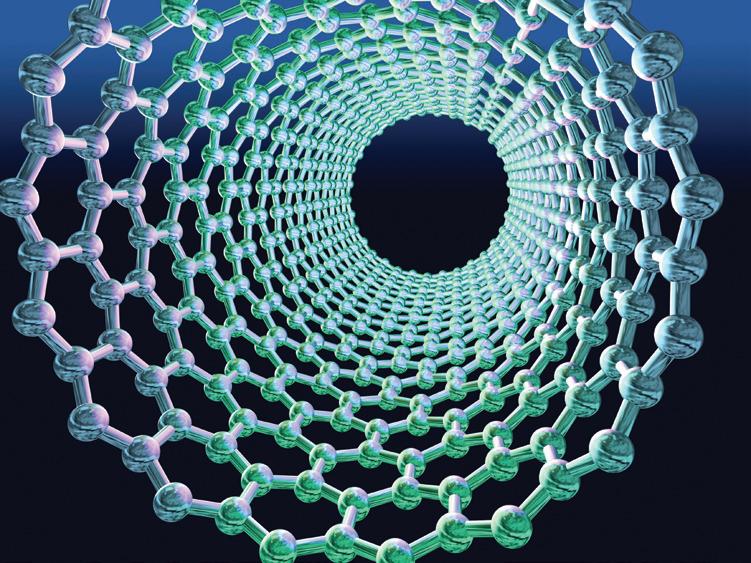
news
GSK partnerS with neOMeD tO create new biOlOGicS anD vaccine centre Of excellence
In a proposed partnership with NEOMED, GSK is re-engineering its research and development facility in Laval to create a unique Biological Products and Vaccine Centre of Excellence.
GSK expects to contribute $47 million over the next five years to support the creation of the new centre of excellence. It is expected that of GSK Laval’s 122 permanent employees,approximately half will be transferred to the new Centre of Excellence. For those facing job loss, the transition is expected to be complete by late 2015.
“GSK is acting responsibly by ensuring the continued presence of crucial research expertise in Québec, and NEOMED will be able to build on what GSK developed for the last nine years in Laval,” NEOMED president and CEO Max Fehlmann said.
“We are very pleased to partner with NEOMED to create a unique Biologics and Vaccine Centre of Excellence,” said Paul Lirette, president, GSK Canada Pharmaceuticals. “It enables GSK to look externally and develop collaborative partnerships to optimize R&D, and represents the dawn of a new and promising era for pharmaceutical research in the Montréal region.”
The new NEOMED biologics and vaccines division is structured around three distinct integrated pillars: • The transformation of the GSK research facility, and its high-tech laboratories and equipment, into a multi-tenant hub of small and medium-sized enterprises specialized in this important area of expertise; • The creation of a specialized contract research organization (CRO) that will market its biology and clinical immunology services to the business community and to GSK for at least three years; • The creation of an exclusive partnership between GSK and NEOMED in order to share risks and benefits on existing biologic and vaccine projects.
As part of the new partnership, GSK and NEOMED say they will each invest $10 million to fund up to five product research and development projects transferred from GSK. GSK will continue to pay the entire cost for leasing the facility for-five years, representing an investment of $10 million. Additionally, GSK will buy clinical testing services from the Contract Research Institute (CRO) which will be part of the Centre of Excellence, for at least three years representing an additional investment of $27 million.
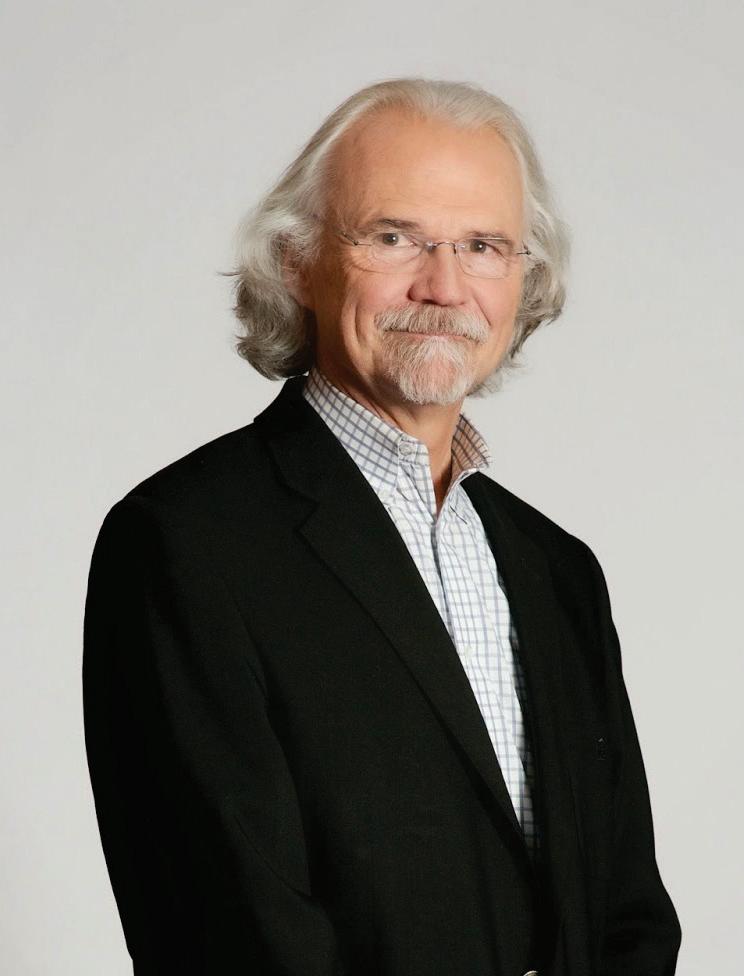
To see this story online visit
http://www.laboratoryfocus. ca/?p=2845
sfu lab creates Potentially life savinG heart cells
A group of Simon Fraser University researchers’ cultivation of dozens of beating heart cells in Petrie dishes could one day save or improve the lives of patients with inherited heart arrhythmias.
Elham Afshinmanesh and Sanam Shafaattalab, graduate students in SFU’s molecular cardiac physiology lab, have created the heart cells, also known as cardiomyocytes, beating in unison. They’ve been crafted from the skin of heart arrhythmia patients.
Because the beating heart cells share the same genomes as the patients, these cells also mimic the patients’ diseases, permitting scientists to experiment with potential drug therapies and interventions.
The students are working under the supervision of Glen Tibbits, a SFU professor and Canada Research chair in Molecular Cardiac Physiology. They are collaborating with cardiologists, who specialize in inherited cardiac arrhythmias, at B.C. Children’s and St. Paul’s hospitals.
Their research is key to developing one of the first laboratories capable of testing cardiomyocytes in vitro and then recommending customized treatment for individuals who have these inherited heart diseases.
“It’s often very challenging for clinicians to assess risk in these patients,” explains Tibbits.
He adds, “It is frequently difficult to determine whether a patient has a high likelihood of suffering from cardiac arrest or will be okay by simply taking a beta blocker and/or other medications. The idea behind our work is to test, with the patient’s own cells, what therapies might work, or not.”
The research is new and complex, and according to Tibbits, they are optimizing the methods by which a patient’s blood cells can be reprogrammed into induced pluripotent stem cells, which can then become any kind of cell. They have already mastered the ability to turn skin cells into this type of stem cell (iPSC), but would prefer to work with the patient’s blood, since this is more efficient and less invasive than using skin biopsies.
Says Afshinmanesh, “When we convert the blood and skin cells to stem cells not all of them can be further differentiated into heart cells. So we’re looking for markers that will predict which stem cells are good prospects for becoming heart cells.”
Tibbits expects that within the next few months his lab will be ready to begin testing the beating heart cells with therapeutic interventions to determine the efficacy of individual treatments.
“We have grants to support our work right now, but eventually we hope that these tests will become part of the Medical Services Program,” explains
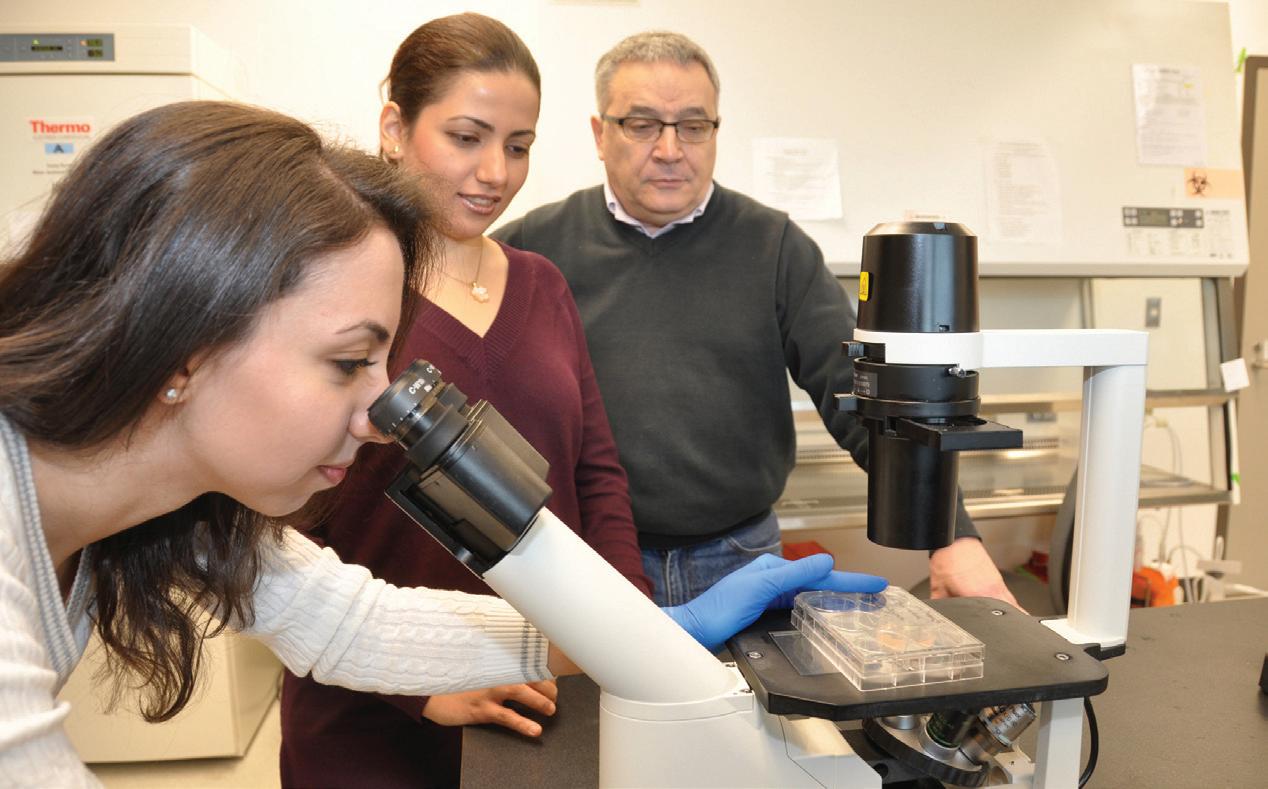
SFU molecular biology and biochemistry students Sanam Shaffaattalab (front) and Elham Afshinmanesh, and their doctoral thesis supervisor Professor Glen Tibbits view manufactured beating heart cells. Photo: Simon Fraser University
Tibbits. “Then we will isolate the skin or blood cells, convert them, determine the appropriate patient therapy and then be reimbursed.”
The Canadian Institutes for Health Research is funding the research.
To see this story online visit
http://www.laboratoryfocus. ca/?p=2848
news
breaKinG DOwn the (cell) wall: MaKinG fuelS anD cheMicalS frOM biO-inSpireD SOurceS
Living cells are a hive of activity, full of tiny structures making proteins, breaking down junk and creating energy. All of this happens through a series of chemical reactions made possible largely because of the humble cell wall.
“If you remove the cell wall, keeping exactly the same molecules that were inside the cell, then the same reactions will not occur or will occur very, very, slowly,” says Cecile MalardierJugroot, assistant professor in chemistry and chemical engineering at the Royal Military College of Canada.
Inspired by the reactive power of cells, her team and collaborators are working to develop nanoreactors that mimic natural biosystems and their very high efficiency within a confined space. Their hope is to produce something more stable than biosystems offer, harnessing their advantages and using their structure and function as a model.
By introducing confinement to nanosystems, researchers mimic the effect of the cell wall on reactions. Suddenly, reactions that would not occur normally in bulk materials start to form. They’re fairly slow reactions, but they are special because no heat, pressure, nor catalysts need to be added to the mix to get the activity going.
Biosystems are inherently efficient in both thermodynamic and kinetic terms, but how best to maximize their nanoreactor cousins will take a great deal of study. The goal is to make more efficient fuel cells than anything currently on the market, working with carbon nanotubes and sheets, on the scale of individual atoms.
One of the first variables to test is the introduction of platinum crystals within their nanoreactor templates — a design also inspired by nature, since many cells use a metal centre as a reactive site. This first nanoreactor provided a three fold increase in the reaction rate within the template in the presence of the metal center compare to the empty nanoreactor. The researchers also plan to test gold and gold-platinum alloys to open up more potential applications. The function of these metal-reactive site systems is still relatively new territory, and called for new research methods.
To achieve the fine detail needed to analyze these systems, the team used the Canadian Light Source synchrotron, transmission electron microscopy and the Canadian Centre for Electron Microscopy.
“When we started this four years ago, we did the characterization using transmission electron microscopy, however with this technique, the samples have to be in the dry state and you get only the sense of one part of the sample, not the average of the sample which we needed to find out if we had the same number of clusters distributed everywhere in our sample,” explains Malardier-Jugroot.
The Malardier-Jugroot team is most specialized in modelling, so they were grateful to work with the CLS crystallography scientists, who performed the X-Ray Diffraction analysis for the researchers.
There were surprises in store. For one thing, the templates, which were normally only stable at pH 7, remained stable from pH 3-13 with the addition of platinum. How and why that occurs is a major question. In fact, the field remains full of mysteries: the nanoreactors can be light sensitive, so how can that be harnessed? What creates specific crystal structures? How do these structures affect function? Fuel cells are only one potential application for these mimic of biosystems — more wait to be uncovered.
The research was supported by the National Science and Engineering Research Council of Canada (NSERC), the Canadian Centre for Electron Microscopy (McMaster University), the NIST-CNR in part by the National Science Foundation and the Canadian Macromolecular Crystallography Facility at the Canadian Light Source.

Artificial nanoreactors with 1D and 2D confined environment, the Pt metal center observed by transmission electron microscopy is shown on the left (a) with an average diameter of 1.89 nm. The X-Ray spectra of the system presented in blue (b) shows the Pt nanoparticle peaks at 2q of 17.49 and 20.22o Cite: Groves, Michael N., Cecile Malardier-Jugroot, and Manish Jugroot.
To see this story online visit
http://www.laboratoryfocus. ca/?p=2851
nrc, lilly creek and amric join forces on vaccine to Prevent Gastritis, ulcers and Gastric cancer
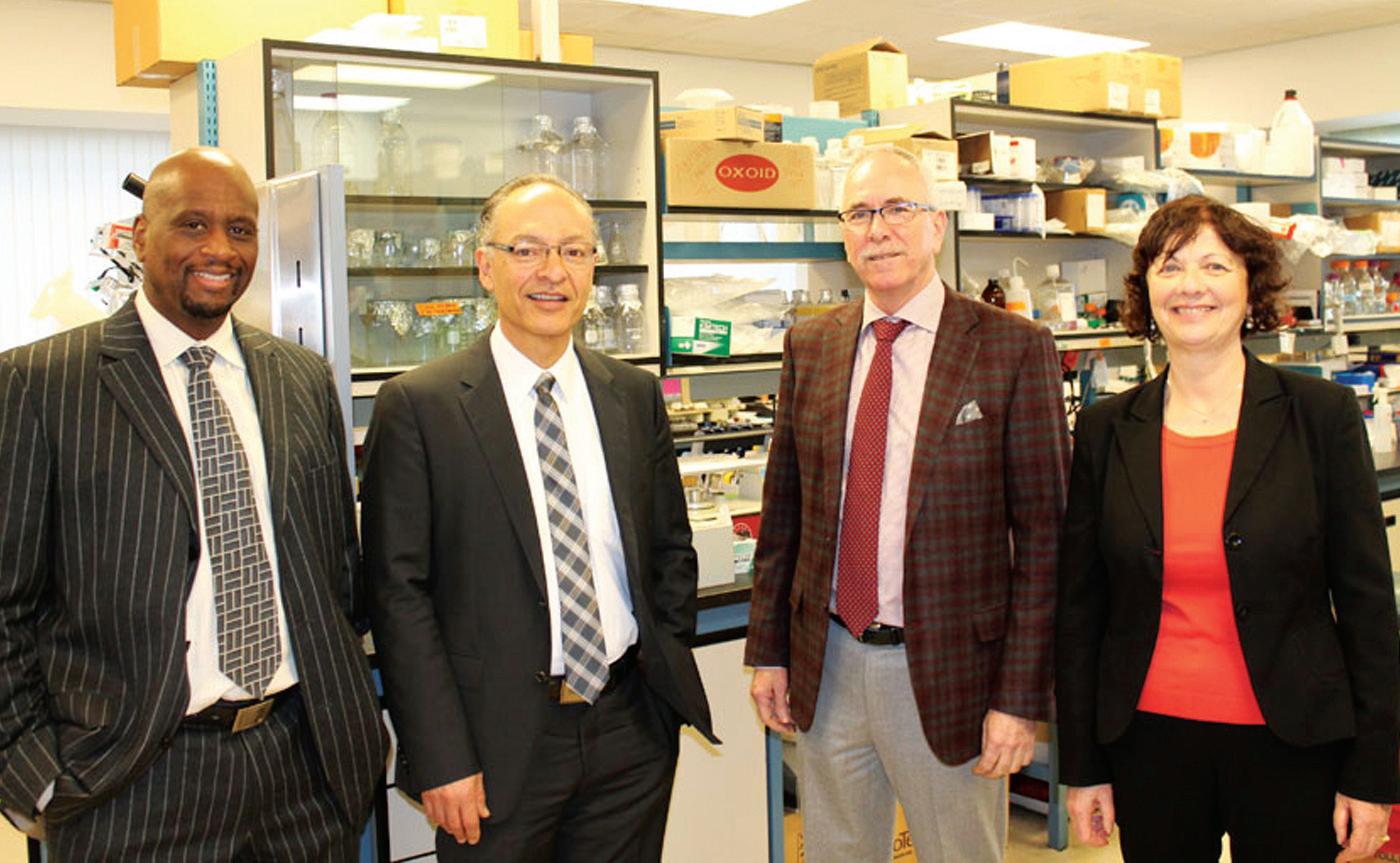
(L to R) Sean Thompson, President and CEO of Lilly Creek Vaccines, Francisco Diaz-Mitoma, CEO & Scientific Director of AMRIC and Jim Richards and Eleonora Altman from NRC visit Lilly Creek Vaccines in Sudbury to announce an agreement to develop a new vaccine to combat Helicobacter pylori infection in Canada (Photo credit: NRC) Vaccines have the power to prevent infections that cause cancer – familiar examples include Gardasil and Cervarix to prevent HPV infections that cause cervical cancer. Researchers at the National Research Council of Canada (NRC), the Advanced Medical Research Institute of Canada (AMRIC) and Lilly Creek Vaccines are harnessing this principle to develop a new vaccine to combat and eradicate Helicobacter pylori (H. pylori) infection in Canada.
As part of this two-year, $575,000 agreement, NRC’s Vaccine Program will design a candidate vaccine using glycoconjugate antigens that stimulate the immune system. NRC will also carry out preclinical testing to determine its efficacy. H. pylori infection affects about 50 percent of the world’s population – 70 per cent in developing countries and 20 to 30 per cent in industrialized countries, with most infections occurring in childhood. The infection causes gastritis in almost all cases, peptic ulcers in 10 to 15 per cent of cases, and gastric cancer in about one per cent of cases.
A class 1 carcinogen, H. pylori increases the risk of gastric cancer six-fold. Particularly at risk for H. pylori infections are Canada’s northern communities, where infection rates range from 50 to 60 per cent compared to about 20 to 30 per cent nationally.
If results from the new program are positive, preclinical research and clinical trials in high-risk populations in northern Canada will be conducted by Lilly Creek Vaccines, a new venture created by AMRIC a Health Sciences North hospital affiliated research institute that aims to improve health care outcomes in Northern communities and across Canada.





